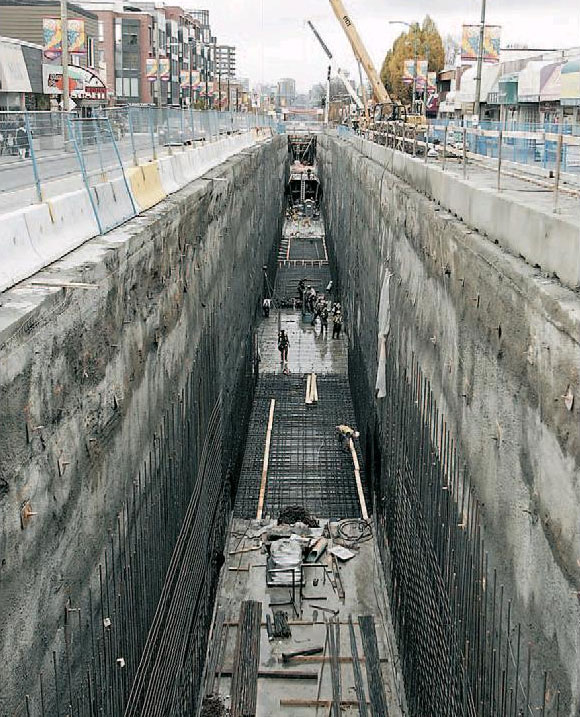Calling all shy, awkward guys: You can score by just being you — just drop the ‘hey baby’
Cheryl Chan
Province
It isn’t easy to be single in Vancouver.
Plenty of beautiful, smart, attractive women say Vancouver is a hard place to meet men: They’re cute, but sadly, mute.
Ronald Lee is determined to change all that — one guy at a time.
“Some of these guys don’t know how to communicate with women, how to approach them,” he says. “It’s a learned skill. No one is born knowing this automatically.”
With his stocky build, casually mussed hair, and a round, friendly face, Lee doesn’t look like a Casanova, Don Juan or even a George Clooney.
But clad in a navy blue hoodie at a Yaletown coffee shop on a Thursday afternoon, he exudes confidence.
Lee, 32, is head coach and founder of Man Meets Woman, a Vancouver company that teaches shy, socially awkward men the finer points of attraction and seduction.
To seduce means “to win over, attract, entice, and charm.” But in today’s hook-up dating society, seduction can be a dirty word.
“There’s a stereotype of a shady, manipulative type of guy,” says Lee.
And that’s clearly not his style.
Lee’s coaching philosophy is “about honesty and authenticity, just being yourself.”
He doesn’t teach a magic line or sure-fire trick. “It’s a lot of hard work,” he says. “It’s about improving yourself as a person.”
Lee’s background is in kinesiology and communications at SFU. He has no formal credentials in psychology and counselling but bases his lessons on popular psychology, scientific studies and first-hand experience.
“I’m very flirtatious and very social,” he says. “It’s easy for me to talk to people.” (He met his girlfriend of 14 months at a wedding, where he chatted her up in the hallway).
He got his start about a decade ago when he joined the online subculture of pick-up artists dedicated to unlocking the mysteries of the opposite sex — sometimes with dubious tactics.
It is a world with its own lingo, where an AFC (Average Frustrated Chump) learns how to become a PUA or Pick-Up Artist, as chronicled in Neil Strauss’ book, The Game: Penetrating the Secret Society of Pick-Up Artists.
It has spawned legendary lotharios, MPUAs or Master Pick-Up Artists, who go by pseudonyms like Juggler, Mystery or Twotimer, and tour the international circuit teaching men how to score and snag beautiful women.
Lee points out that he has distanced himself from that scene. “Some of the tactics are low-level and, frankly, just wrong.”
He’s ditching the canned pick-up lines, stock stories and choreographed come-ons in favour of a more natural, direct method.
“Be social, or learn how to be social,” he says. “You could say I’m teaching guys basic social skills.”
To train his students, he uses lectures, videos, role-playing and “in the field” experiences at the mall or during a night on the town to practise what they’ve learned in the classroom.
So far, about 250 men from the Lower Mainland, Seattle, Portland and cities across Canada have taken his courses. Costs range from $60 for a 90-minute How to Flirt course to $1,400 for a three-day “foundation” course.
Man Meets Woman will be holding a one-day workshop at the downtown YWCA today — billed as “An Audience with Zan! The World’s Greatest Seducer!”
Over the phone from Montreal airport, Zan Perrion points out that the nickname came from a reporter.
“I wouldn’t call myself that,” he says. “I’m just a guy interested in a dialogue.”
In seduction terminology, the 43-year old Vancouver-based coach is a “rake” — someone who loves and appreciates women.
He teaches men the secrets of attraction, but his real fans, he says, are the women themselves.
“Men talk about the notion that they’re not sure how to react in the dating world, and what their role is supposed to be,” he says.
“And women say to me everywhere, ‘Where are the real men who don’t apologize for being a real man?'”
Perrion says men should state their intentions clearly and approach women without what he calls “the beer shield.”
“Women are craving men who don’t dial themselves down and who are not afraid to be our true selves,” he says.
After travelling the world giving seminars in cities such as Cape Town, Panama City, Frankfurt and San Francisco, he agrees that his hometown is a big challenge for singles of both sexes.
“In other cities . . . people really mingle,” says Perrion. “Here, we go out in little groups, we sit in little groups, mingle in our group and then go home. There’s no spirit of celebration.”
Perhaps that’s why business is booming.
On Nov. 30, Perrion will hold a three-day intensive workshop on the Way of Attraction at the Sutton Place Hotel.
Lee has a whole slew of courses scheduled for the month, and will be launching a new coaching company for women next week called Happy Sexy You.
For women to meet guys, he says, they need to “let go of the fear of rejection, make it easier on the poor guy and give him some signals.”
But back to men. Here is what I learned from these two seduction masters on how best to approach potential girlfriends:
Say “Hello,” not “Hey, baby.” Be confident but respectful. Be direct but not presumptuous. Be sincere but not a wuss.
Be alpha-male masculine, but not caveman-like.
Be yourself, just with better communication skills.
RONALD LEE SUGGESTS THESE FIVE OPENING LINES
1. Ask for their opinion. “Can I ask you for a quick female perspective?”
2. If you find them attractive, say so. “You’re really cute/beautiful.”
3. “You have a very interesting energy. What”s your thing?”
4. “You have a beautiful smile.”
5. Say something spontaneous and relevant to the situation, such as “I love your top,” or “How’s your coffee?”
© The Vancouver Province 2007









